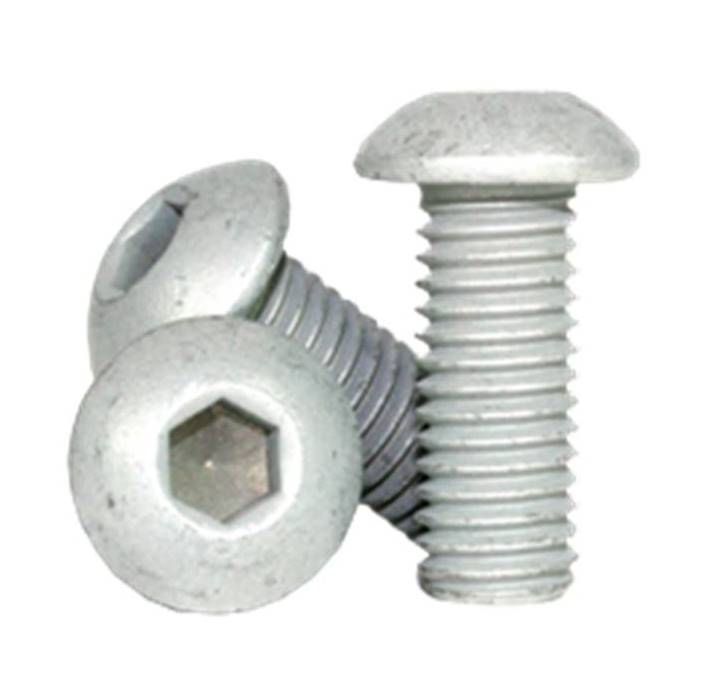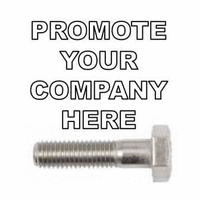Zinc Mechanically Coated Fasteners
Bolts Mechanical Zinc
Fastener and thread mechanical plating is a term usually given to the method of coating parts with Zinc by “cold welding” particles of Zinc powder, sometimes mixed with a small amount of other metals. onto mainly steel fasteners, bolts and screws. The current understanding is that It does not induce lasting Hydrogen Embrittlement so it is often used for coating high tensile fasteners class 10.9 and higher grades.

Mechanical Zinc Plating
After cleaning, the parts are put into a rotating barrel with an inert medium that is usually Glass beads. After an activation process that uses small amounts of copper and tin, Zinc powder is added and the motion of the barrel and the “impingement” of the beads “cold welds” the zinc onto the part surface. The process is carried out at around ambient temperature. The thickness of the deposit is controlled by the amount of zinc added. This means that thicknesses from about 3-5µm up to 40µm can be applied as required.
The glass beads used are small (from about 1mm. to 5mm diameter) and are mixed to ensure good coverage. They are removed from the load after coating usually with a magnetic separator. Tin or Aluminium can be mixed with the Zinc powder to give a mixed coating used for specific purposes.
.
Zinc Mechanically coated fasteners
Zinc Mechanically cold welded fasteners can receive a chromate passivation similar to an electroplated deposit.
Normal thicknesses of deposit will give about 240 hrs. salt spray.
Mechanical Zinc Plating does not rely on the conductivity of parts, and it is a room temperature process, it can be used effectively on composite assemblies such as parts with rubber or plastic mouldings attached.
The national specification for this coating is BS 7371 Part 7. Specification for mechanically applied zinc coatings.
Mechanical Zinc Plating Process
Fasteners to be mechanically coated are placed into a tumbling barrel containing glass beads, reagents and catalysts, which activate and prepare the surface. The coating to be applied is added, in metallic powder form and glass beads of varying sizes ‘cold weld’ the coating on to the activated surface of the Bolt or Screw. Similar passivates to electroplating are then applied, prior to drying the parts, lubricants may also be added as part of this process. Mechanical zinc can be used as an undercoat to enhance the performance of organic paint systems.
It is important that all alloy coatings are supplied with the correct amount of alloying metal, which can now be tested non-destructively using X-ray fluorescence techniques. The equipment also determines thickness to an accuracy of ±5% which is better than any other means of nondestructive testing.
Advantages of Mechanical Coating
- Uniform coating-galling reduced for threaded fasteners.
- Porous substrates can be coated satisfactorily.
- Cost-effective replacement for galvanising, removing the heat and depth of coating issues.
Dis-Advantages of Mechanical Coating
- This process can only be performed in a barrel, so parts larger than about 120mm long cannot be processed.
- Care needs to be taken to stop beads being trapped in some parts
- Large diameter bolts can ensure thread damage during the barreling process
Mixed Metal Applications
Mechanical plating can be used to apply zinc, tin or aluminium coatings, either singly or in combination. It is, essentially, a ‘cold welding’ concept that applies the coating using mechanical energy, at room temperature. Mixed Metal Coatings can provide specific advantages such as ductility or high corrosion resistance, especially in certain environments or in contact with other metals. These include Zinc, Tin, Almac and Inverplex.
Almac
Almac® coatings are combinations of aluminium and zinc which give substantially increased corrosion resistance compared with zinc. They are more ductile than zinc and are very advantageous when used in contact with aluminium.
Inverplex
Inverplex® is a mixed coating of zinc and tin that has better conductivity and corrosion resistance than zinc. It may be supplied passivated and is used for earthing screws.
mechanical zinc plating



